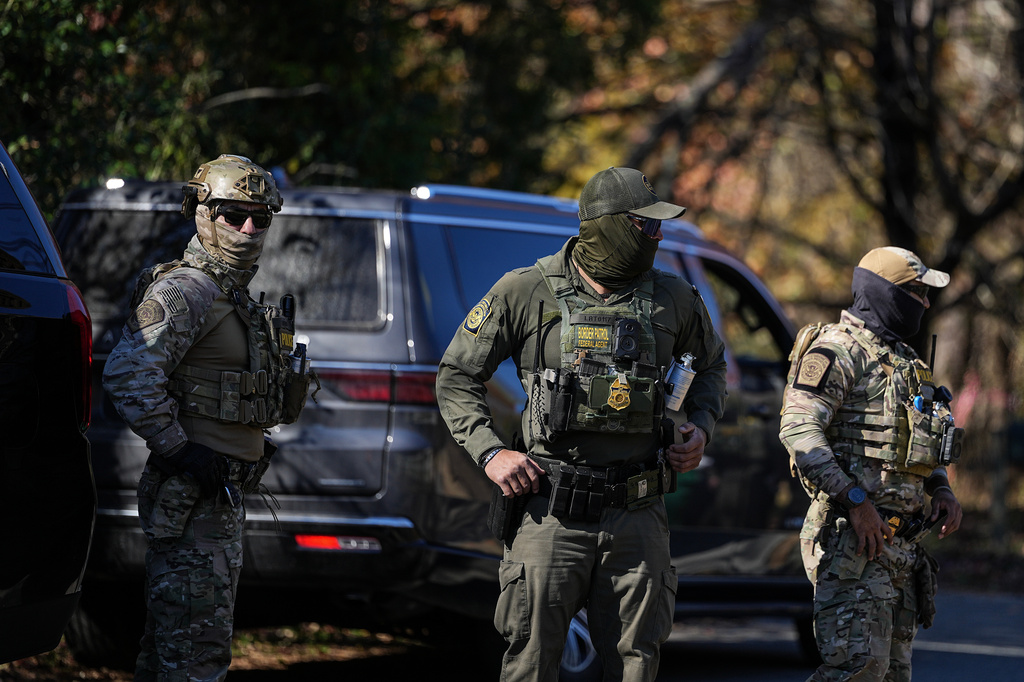The stunning 2022 collapse of the Fern Hollow Bridge in Pittsburgh injured 10 people and led to a nationwide review of thousands of bridges built using the same type of steel.
But a Scripps News investigation uncovered reports of problems with the performance of the material, known as uncoated weathering steel, long before Fern Hollow fell.
Gary Tinklenberg, a corrosion expert, has been raising concerns about this type of steel for decades.
Inside a storage unit in Holland, Michigan, Tinklenberg has stashed dozens of boxes full of old files. The records date back to the 1970s, when he was just starting his career as a chemist for the Michigan Department of Transportation.
Part of his job was to assess the effectiveness of what was then the hot new thing in bridge building, especially in Michigan.
Makers of uncoated weathering steel said it would naturally resist corrosion without ever needing a paint job. A pamphlet Tinklenberg pulled out of a file box showed the steel industry in 1968 claiming the material could make “bridges that paint themselves.”
Not having to paint the bridges was a real selling point. It cut costs, sped up construction timelines and didn’t require repainting year after year as was done on other steel bridges.
"At that point, everybody believed that it would be maintenance-free,” Tinklenberg said. “You didn't have to do anything. You didn't have to paint it. If you could eliminate all that painting and all that maintenance, why, this is the greatest thing since sliced bread.”
But Tinklenberg said the industry’s claims weren’t matching what he was seeing on the ground.
Tests he performed in the 1980s found that de-icing salt used on Michigan highways in winter was preventing a crucial natural protective coating from forming, leaving weathering steel vulnerable to decay.
“The corrosion rates kept climbing,” Tinklenberg said. “This is not what I was supposed to see.”

Thousands of bridges left behind in race to rebuild infrastructure
A Scripps News investigation identified more than 14,000 bridges listed in poor condition for at least a decade.
In 1989, the Federal Highway Administration issued a warning about “less than desirable performance” of the steel in places with frequent rainfall, humidity, persistent fog, or in places such as Michigan where heavy amounts of de-icing salt are spread on roadways.
Over the years, Tinklenberg worried that a bridge made of uncoated weathering steel might collapse.
“I was concerned,” Tinklenberg said. “I had seen an awful lot of ugly steel.”
Tinklenberg determined this bridge material needed careful inspection and upkeep.
In its 1989 bulletin, the Federal Highway Administration agreed, saying that while inspection and maintenance are essential on any bridge, "this is especially true in the case of uncoated weathering steel bridges.”
That lesson wasn’t learned in Pittsburgh.
The National Transportation Safety Board’s investigation of the Fern Hollow disaster found a failure to maintain the steel on the bridge played a critical role in the bridge’s demise in January 2022.
“This bridge didn’t collapse because of an act of God, it collapsed because of a lack of maintenance and repair,” said NTSB member Michael Graham during a board meeting in February.
The agency’s preliminary findings led the Federal Highway Administration to order every state in the country to examine the condition of their own uncoated weathering steel bridges and confirm that work items have been completed.
Using federal bridge data collected from states, Scripps News discovered that out of more than 10,000 weathering steel bridges across the U.S., at least 251 have major repair or replacement needs. Some of those bridges have been partially or fully painted to help prevent corrosion.
New York has the most weathering steel bridges in disrepair, followed by Michigan, where Tinklenberg worked. Forty-two of the bridges in that state are listed in poor condition and in need of maintenance, including a structure in Flint that carries an average of 63,000 vehicles each day on Interstate 475.
A visit to the bridge's underside showed cracked concrete temporary steel support beams in place since 2015.
Inspection reports Scripps News obtained for another uncoated steel bridge on Interstate 475 in Flint documented cracks and weakened bearings going back five years.
Beckie Curtis, chief bridge engineer at Michigan’s Department of Transportation, said a lack of funding combined with inflation are making it impossible to keep up with an expanding list of deteriorating bridges in her state. That includes the bridges made from uncoated steel where maintenance is very important.
“We know we don't have the resources to address all of them and that's why we're seeing a decline in our condition over time,” Curtis said. “We’re losing ground.”
In 1980, warnings from Tinklenberg and his colleagues led the Michigan Department of Transportation to ban the construction of any new unpainted weathering steel bridges.
Curtis said rigorous inspections ensure all of the 500 existing bridges like this stay safe.
Michigan’s Department of Transportation now paints all the joints on their weathering steel bridges for extra protection.
“The weathering steel bridges are actually performing just as well as the average population,” Curtis said. “There's not the data-driven evidence that this one particular material is worse than the general population of the bridges, when managed appropriately.”
The steel industry also stands by the use of uncoated weathering steel in bridge construction.
“There are thousands and they've been around for decades,” said Ronnie Medlock, vice president of High Steel Structures in Lancaster, Pennsylvania.
Medlock said the key to keeping any bridge functional is to know the upkeep required.
“Any time we're using a material, whether it's uncoated weathering steel or other, use it thoughtfully, make sure you know what's going on,” Medlock said. “What I'm concerned about is that perhaps people didn't know how to do the maintenance that they need to do when issues arise.”
Tinklenberg said he worries that a lack of understanding about the unique needs of uncoated weathering steel threatens the safety of these bridges nationwide.
“At least people need to know that they have to pay attention to this stuff, and the Fern Hollow bridge has clearly catalyzed that attention,” Tinklenberg said. “You need to be concerned. You need to follow the best practices.”











